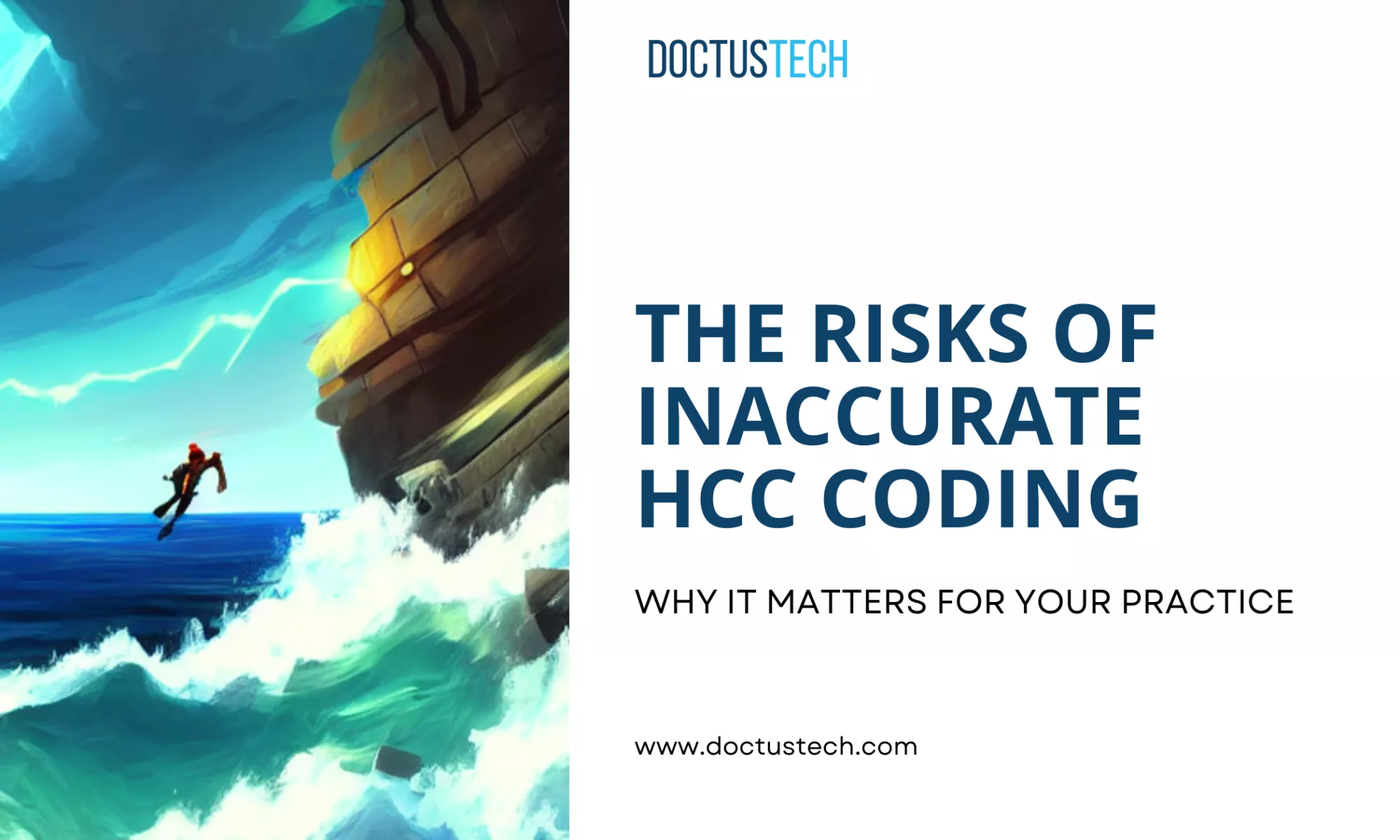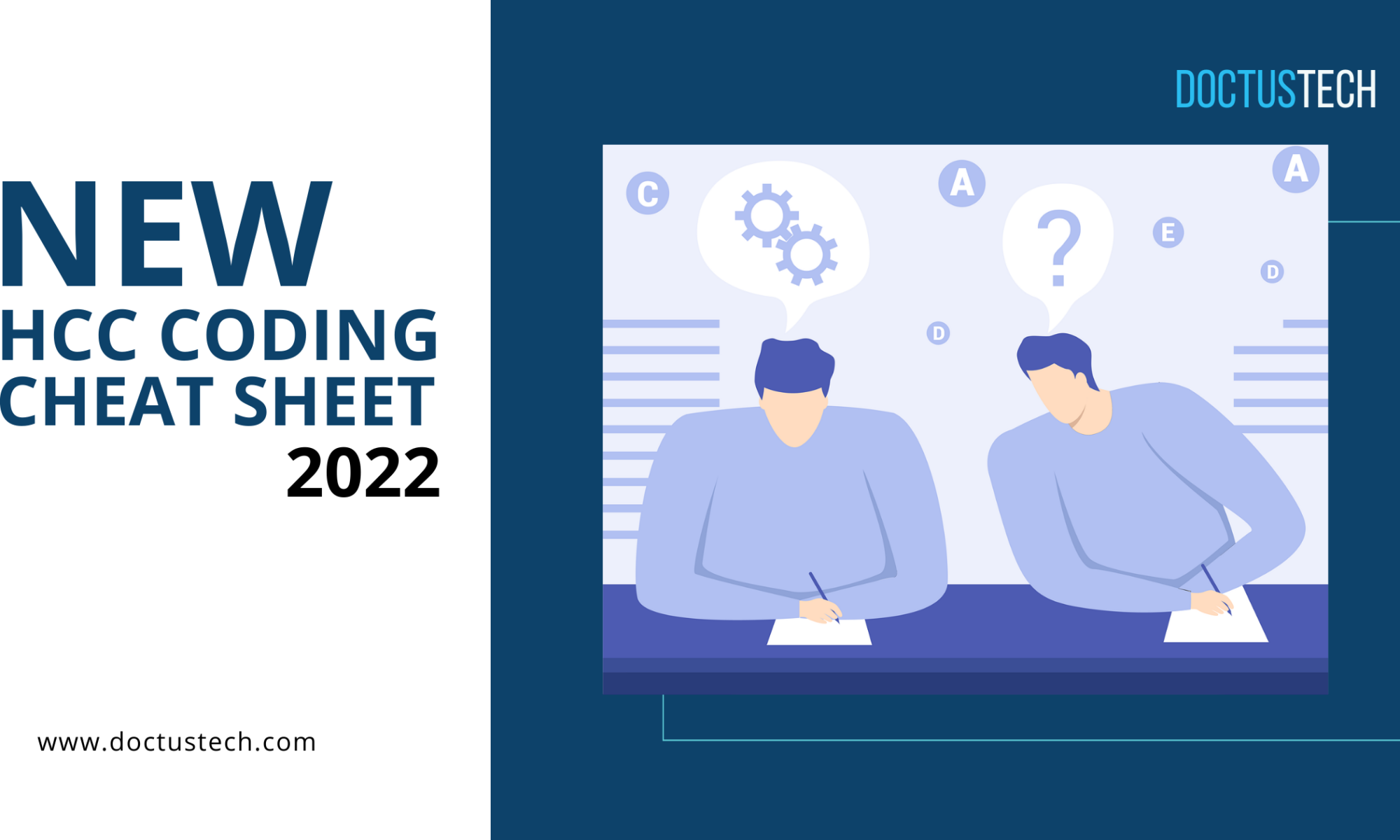In value-based care (VBC), accurate risk adjustment is more than just a compliance checkbox—it’s the foundation for proper reimbursement, better population health management, and meaningful patient care. But each year, many chronic conditions go undocumented, leading to missed revenue and underrepresented patient risk scores. The issue? Poor HCC recapture.
Let’s explore why this happens and how HCC recapture with AI support is revolutionizing the way healthcare organizations approach documentation, recapturing, and compliance.
Why HCC recapture falls apart
The reasons for poor HCC recapture are deeply tied to the organization’s level of sophistication and resources. For example, in practices with limited infrastructure, clinicians are often solely responsible for identifying and re-documenting HCCs—sometimes in real time during the patient visit—without additional support.
Let’s imagine a scenario: a primary care physician is reviewing a patient’s chart during an annual wellness visit. If the patient’s chronic conditions are clearly listed in the problem list and thoroughly documented in the past, the provider may be able to recapture some of those HCCs. But even then, the clock is ticking.
They will prioritize an acute issue like elevated blood pressure in the limited time they have, skipping over less acute but still relevant diagnoses like diabetes or morbid obesity.
This leads to partial documentation. Worse, if last year’s documentation used a nonspecific diagnosis (e.g., “depression” instead of “major depressive disorder”), that HCC could be lost completely, along with a significant chunk of the RAF (Risk Adjustment Factor) score and associated revenue.
Even the most diligent clinicians can miss crucial diagnoses—not because they lack knowledge, but because the workflow isn’t built to support accurate and complete recapture. Let’s break down where traditional workflows make it even harder to get this right.
For example:
-
- A provider may document “depression” multiple times, not realizing that CMS requires specificity (like “major depressive disorder”) for accurate risk capture.
-
- A patient’s “heart failure” may be addressed during a visit. Still, if the encounter is documented solely under hypertension —a related condition that isn’t an HCC— the heart failure can go unrecaptured, despite being part of the clinical management.
- A patient’s “heart failure” may be addressed during a visit. Still, if the encounter is documented solely under hypertension —a related condition that isn’t an HCC— the heart failure can go unrecaptured, despite being part of the clinical management.
All of this adds up to a system that puts too much pressure on clinicians and leaves too much room for error. The intention is there, but accurate HCC recapture becomes a hit-or-miss process without the right tools and support.
So, how do organizations try to catch what’s been missed? Let’s take a look at how manual chart reviews typically approach recapture.
How manual chart reviews typically handle recaptures
In many organizations, HCC identification is still handled manually, and while this method can catch missed diagnoses, it comes with significant limitations.
There are generally two approaches to manual chart reviews.
In one, coders check completed notes after the visit and advise clinicians on which ICD-10 codes need further specificity to support accurate HCC documentation.
In another, coders flag missed codes and offer clinical suggestions for future encounters. For example: “Based on this documentation, consider evaluating for [condition] at the next visit.” Both approaches can be valuable, but they rely on retrospective review.
And that’s where the problem begins.
Manual reviews are typically conducted after the note is signed, often 48 hours or more after the encounter. Due to this delay and the need to prioritize resource allocation, most organizations opt for targeted reviews, focusing only on specific visit types, such as annual wellness visits or charts flagged by payers. That means a large volume of documentation goes unchecked, leaving many conditions uncoded.
Even when organizations attempt broader reviews, staffing becomes a bottleneck, as it requires a large team of coders, either in-house or contracted, which drives up costs and slows down workflows. Most teams don’t have the bandwidth to do this consistently.
When documentation isn’t reviewed in time—or if it’s never reviewed at all—opportunities for accurate risk capture are missed. In some cases, entire panels of patients go under-coded for extended periods, leading to significant revenue loss and compliance risk. A provider with a large panel could potentially go an entire year without properly documenting HCCs.
Even if the gap is identified, it will require dedicated chart review sessions to clean up the data. Even then, if it is identified months later, some notes might fall outside the permissible correction window, meaning the lost revenue cannot be recovered.
This kind of scenario isn’t rare. And in today’s value-based care environment, where timely, accurate recapturing directly affects both compliance and reimbursement, that’s no longer good enough.
Some organizations try to balance costs by outsourcing coding reviews, focusing only on annual wellness visits, or high-risk patients. But even then, many gaps go unnoticed until it’s too late.
That’s the fundamental issue with manual recapture: even with experienced coders and targeted strategies, it’s still a race against time, capacity, and documentation gaps. And when the process relies on people catching mistakes after the fact, it’s nearly impossible to scale, let alone catch everything.
But that’s precisely where AI changes the game.
Transforming HCC Recapture with AI: A Game Changer for VBC Organizations
Artificial intelligence fundamentally shifts the approach to HCC documentation. Unlike static, rules-based systems, AI analyzes language, patterns, and relationships across patient records. Here’s how HCC recapture with AI redefines the game:
1. Text interpretation, not just data matching
AI can understand free-text notes, detect nuanced language around diagnoses, and flag relevant conditions—even when the conditions have not been coded or listed in structured fields.
For example, if a patient has multiple mentions of fatigue, shortness of breath, and previous heart studies, AI can connect these elements and recommend evaluation for a likely heart failure diagnosis —even if the condition hasn’t been explicitly listed.
This level of insight is nearly impossible with hardcoded rules, which can’t account for the complexity and variation of clinical language.
2. Documentation feedback
DoctusTech’s AI Coding Agent reads progress notes in real time and delivers actionable documentation feedback (for supported EMRs), and it checks 100% of charts for compliance, helping teams:
-
- Recapture all previously documented HCCs.
- Ensure documentation meets MEAT criteria.
- Identify which conditions are compliant vs. at risk of audit failure.
By flagging errors, the AI agent boosts coder productivity up to 3x, supports compliance, and reduces RADV audit exposure.
3. Workflow-friendly support
AI doesn’t have to be disruptive. When integrated thoughtfully, it acts as a smart assistant:
-
- Pre-visit: Surfaces suspected conditions for recapture
- Point-of-care: Highlights relevant lab results, history, or prior notes tied to a flagged condition
- Post-visit: Alerts providers to incomplete or non-specific documentation, with suggestions for improvement
Clinicians stay in control. AI simply directs their attention to the most relevant information—reducing the cognitive load without dictating care.
By shifting from reactive reviews to real-time, intelligent support, AI doesn’t just catch more—it empowers teams to document better from the start. But accurate documentation isn’t just about what gets flagged. It’s also about how well that documentation holds up under scrutiny.
That’s where MEAT criteria come in—and why they play a critical role in both recapture and compliance.
The role of MEAT in recapture and compliance
Recapture isn’t just about checking a box. CMS requires documentation to show that a provider is actively managing a chronic condition. That’s where MEAT criteria come in:
-
- Monitor: e.g., symptoms, labs, tests.
- Evaluate: e.g., progress, response to treatment.
- Assess/address: e.g., ordering tests, adjusting medications.
- Treat: e.g., prescribing drugs, recommending lifestyle changes.
AI can analyze the clinician’s note and determine if each component is present for a given diagnosis. If one is missing, it flags the documentation as non-compliant.
This not only protects against audits, but it also ensures that the diagnosis is medically justified and relevant to the patient’s ongoing care.
MEAT isn’t just a compliance checkbox—it’s an excellent standard for credible, defensible HCC coding. And when it’s missing, the consequences go beyond documentation errors.
By holding documentation to MEAT standards, organizations strengthen both compliance and care quality. But ensuring every note meets those standards—consistently and efficiently—is a challenge no one should tackle alone. That’s where AI steps in, not to replace clinicians or coders, but to work alongside them.
Let’s examine how AI can become a trusted partner for coders, scribes, and clinicians.
AI as a partner for coders, scribes, and clinicians
In an ideal system, AI tools act as intelligent assistants—not replacements—for coding teams that include clinicians, coders, and scribes. When it comes to HCC recapture, the goal is to create a seamless partnership where AI enhances accuracy and efficiency without overwhelming workflows.
For clinicians, AI should:
-
- Flag relevant HCCs in real-time during the visit, prompting for specificity and completeness in documentation.
- Surface relevant past documentation (e.g., specialist notes, diagnostic results) to support diagnosis without manual digging.
- Act as a post-visit auditor, ensuring documentation meets coding requirements and identifying any missed opportunities.
For coders, AI should:
-
- Triage cases based on complexity or risk of error, so coders can focus on the charts that need human review.
- Reduce time spent reviewing accurate charts, improving overall efficiency.
- Identify documentation discrepancies (e.g., incorrect use of active vs. historical conditions) that need human judgment.
For scribes, AI should:
-
- Provide real-time prompts during documentation to ensure critical details are captured at the point of care.
- Suggest structured language that aligns with coding and compliance standards—especially for HCC-relevant conditions.
- Reduce the burden of manual chart navigation by pulling in key historical data or labs relevant to the visit.
Ultimately, AI should streamline—not disrupt—the workflows of clinicians, coders, and scribes. While it may introduce new tools or steps, it also removes bottlenecks, minimizes chart review fatigue, and improves the accuracy of HCC recapture. When done right, AI becomes a quiet but powerful ally in delivering compliant, high-quality documentation.
What to ask before choosing an AI vendor
If you’re evaluating an AI tool for HCC coding, one of the most important questions to ask is: “Is this system compliant with the most current CMS guidelines?” That means staying up to date with both ICD-10-CM updates and HCC model revisions—both of which are essential for accurate risk adjustment and compliance.
To evaluate a vendor’s system, here’s what to look for:
Ask the vendor:
-
- When was the latest update for their ICD-10-CM and HCC model?
- CMS typically releases updates in April and October each year.
- If the system is still using ICD-10 data from more than 6–12 months ago, it may already be outdated.
- When was the latest update for their ICD-10-CM and HCC model?
Pro tip
-
- Check a publicly available ICD-10 lookup tool (like the CDC’s), and verify that the Fiscal Year (FY) matches the current release.
- For example, the FY2025 ICD-10-CM update includes April 1, 2025 Addenda—so that should be reflected in any up-to-date AI tool.
- Check a publicly available ICD-10 lookup tool (like the CDC’s), and verify that the Fiscal Year (FY) matches the current release.
Check how the AI handles newer codes:
-
- Choose a condition with recent coding changes (like Parkinson’s disease, which moved from a single code to subcategories like G20.A1, G20.B1, etc.).
-
- Test the system: Input one of these newer codes. If the tool doesn’t recognize it, it’s likely not using the most current database.
If you’re unsure:
-
- Go to CMS.gov and navigate to the ICD-10-CM and HCC model updates.
- Cross-check the AI system’s output with the most recent agenda or code list to make sure it’s aligned.
Bottom line: A good AI vendor should be able to clearly explain their update schedule, provide transparency into the source of their coding logic, and respond to regulatory changes in real time. If they can’t? That’s a red flag.
But choosing the right vendor is just the beginning. When AI is thoughtfully integrated, it elevates every role—from clinician to coder—making HCC recapture more accurate, efficient, and sustainable. But the real impact goes beyond workflow improvements or audit protection.
Final thoughts: HCC Recapture with AI Isn’t Just Financial
The cost of poor HCC recapture isn’t just financial. It can delay diagnoses, skew patient risk profiles, and lead to failed audits. But the good news is that tools for HCC recapture with AI are no longer a futuristic dream. They’re here now—and they’re working.
Whether your organization is just starting or scaling a risk adjustment program, AI can offer support at every stage. From suspecting to MEAT compliance, it’s not about replacing clinicians—it’s about giving them back time, confidence, and accuracy.
And in value-based care, those three things are everything.
With AI-enhanced tools like DoctusTech, organizations can:
-
-
- Improve RAF accuracy
- Streamline clinician workflows
- Increase MEAT compliance
- Reduce audit risk
- Capture the full complexity of their patient population
-
Whether you’re just beginning your journey in risk adjustment or looking to optimize an existing program, AI is a critical advantage.
Want to see how AI can transform HCC recapture for your organization? Get a Demo to learn about DoctusTech today.




















































